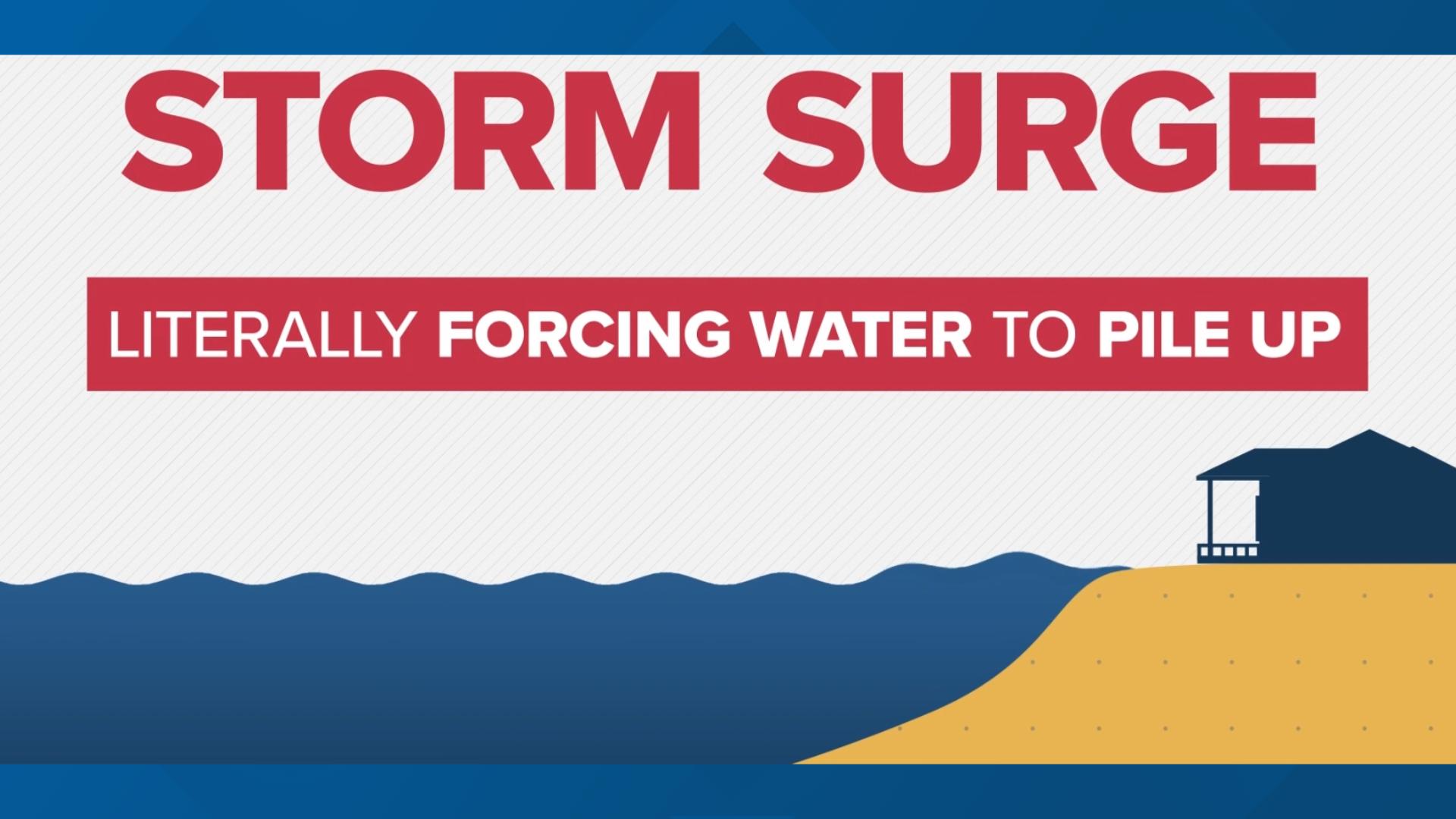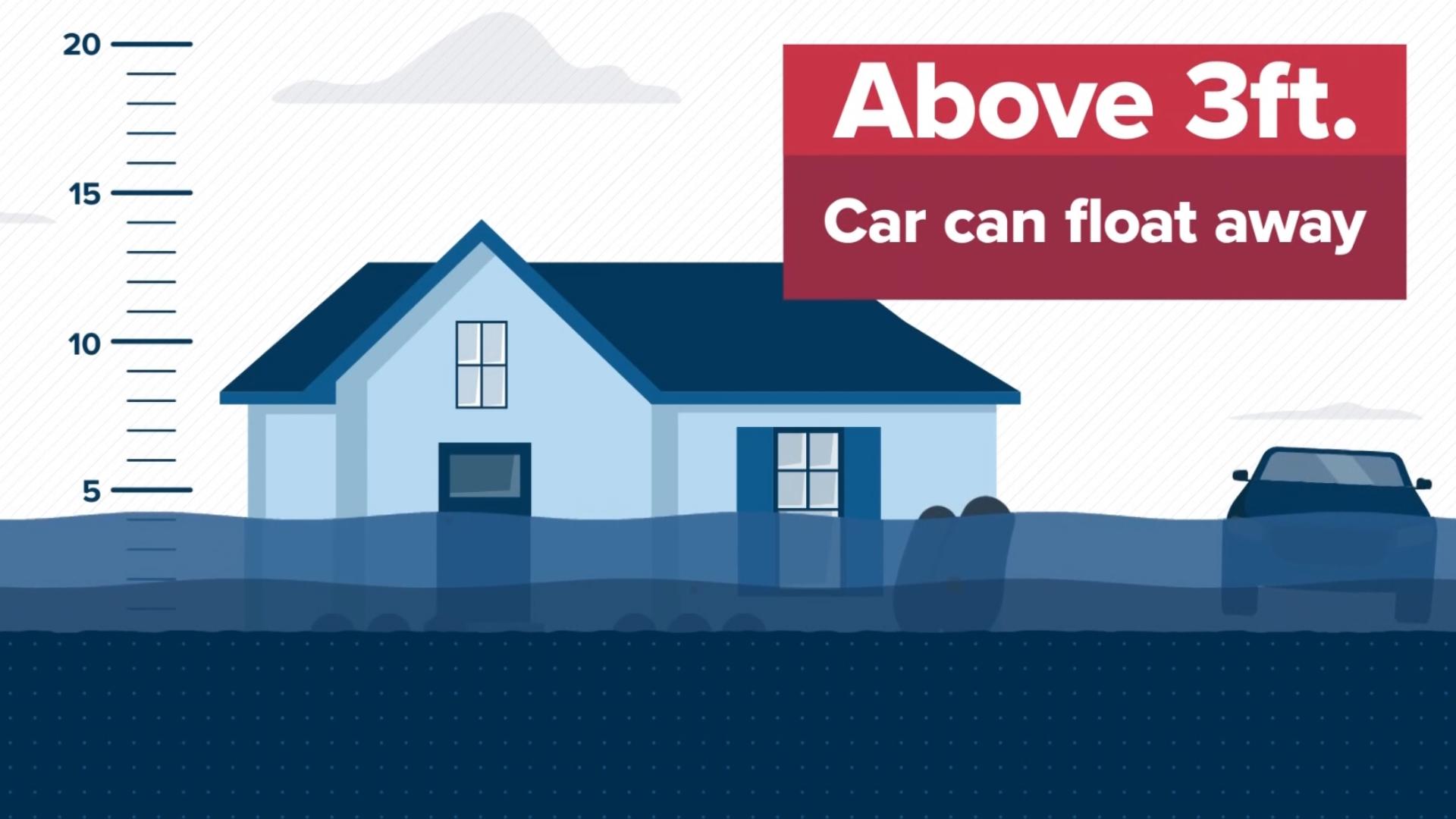JACKSONVILLE, Fla. — Storm surge happens when the strong winds of a hurricane blow over the ocean or Gulf waters literally forcing the water to pile up as it approaches the coast.
That can cause the water level to jump anywhere from one foot to well over 20 feet above normal levels.
Wind speed isn’t the only factor in determining a potential storm surge effect.
The storm’s size, intensity, shape, speed, and angle of approach all matter along with the coast and the slope of the ocean floor.
Remember this: The category ranking of a storm doesn’t always correlate to the storm surge threat. Weaker category 1 or 2 storms have been known to produce higher surges than their stronger counterparts.
In many cases, storm surge is more dangerous because of the power of moving water and the coastal flooding potential it brings.
One to three feet of water can knock you off your feet and stall your car. Above three feet? That water can actually carry your car away. If you’re still home when the water gets up to six feet, you and your family would have to seek higher ground like the second story or a roof. A 12-foot surge would fill the entire first floor of most homes and potentially knock your home off its foundation.
Therefore, it’s important to listen for and to understand those Storm Surge Warnings so you can react early and quickly to keep you and your family safe.
To serve the Nation's growing need for storm surge information by providing accurate real-time surge forecasts during tropical cyclone events, there is a Storm Surge Unit within the National Hurricane Center at the National Oceanic and Atmospheric Administration. They support coastal community preparedness and resiliency through storm surge vulnerability mapping, and increase awareness through outreach and education.


